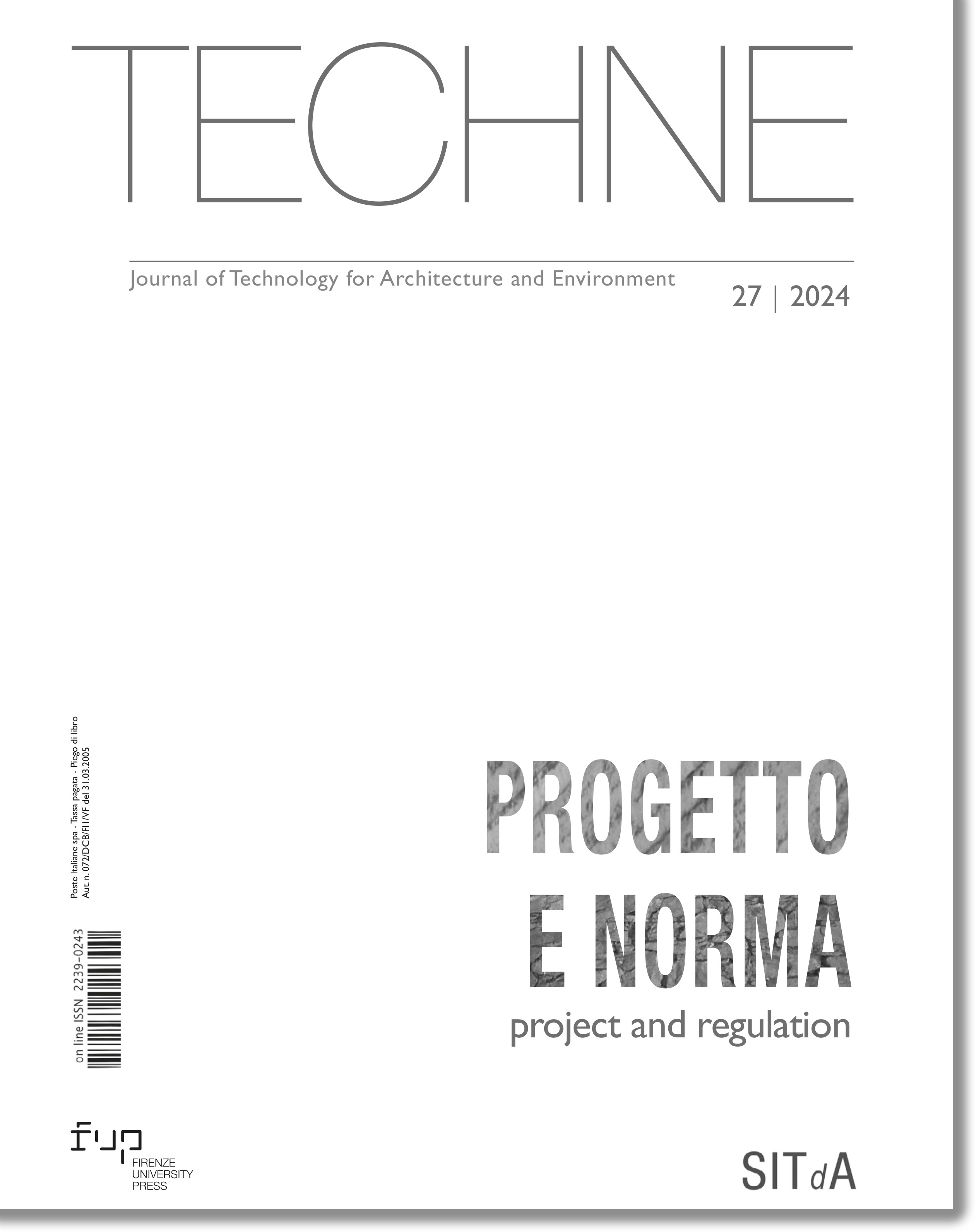Beyond the rule. Development of a multi-criteria tool for designing and evaluating an inclusive context
Published 2024-06-10
Keywords
- Multi-criteria tool,
- Universal Design,
- ICF,
- Legislation,
- Inclusiveness
How to Cite
Copyright (c) 2024 Michele Marchi

This work is licensed under a Creative Commons Attribution 4.0 International License.
Abstract
There are rules that provide shared information with the aim of guiding the behaviour of individuals or the community regarding spaces, processes and products. Therefore, the goal is to start a normalisation and standardisation procedure, which allows to solve a specific problem. With regard to the culture and practice of accessibility of spaces and environments, the reference legislation (Law 13/89, Presidential Decree 24 July 1996, n. 503, ISO 21541:2021, Ministerial Decree 236/89, UNI 17210:2021) is not only rather obsolete, but also excludes a large part of potential users. This paper aims to open a debate on the current operational tools in order to evaluate and design an inclusive context, proposing a new, more performing and universal one. The culture of accessibility is not only the scrupulous and scientific observance of the rules. It also means combining both quantitative and qualitative needs; therefore, providing environmental well-being. Thanks to the critical description of reference or experimental evaluation or design tools (HCD participatory methodologies for the definition of needs analyses, Quality Function Deployment for the tracking of technical specifications, ICF with a focus on UNI activities, laws, decrees and regulations to observe the Rule), this paper describes some projects that attempted to go beyond the rule, providing an inclusive context and space to meet people’s actual needs. Therefore, putting some operational tools into functional synergy (Rules, Inclusive Methodologies, ICF, QFD) to define a new multi-criteria tool can be an excellent starting point to develop, for each specific environmental context, a list of expectations that are important for planning and evaluation.
Downloads
References
- Arrivabene, E. (2015), “La scuola per tutti: un esperimento con ICF”, in Albanese O., Delle Fave A. (Eds.) Disabilità, diversità e promozione del benessere: aspetti clinici, formativi ed educativi, Franco Angeli, Milano
- De Kerckhove, D. (2010), The Augmented Mind, 40K BOOKS.
- ICF. Classificazione Internazionale del Funzionamento, della Disabilità e della Salute (2007), “Erickson”, Organizzazione Mondiale della Sanità – OMS, ICF-CY.
- Marchi M., (2016), Design For Duchenne. Linee guida per il progetto di costruzione o ristrutturazione di abitazioni per famiglie Duchenne, Franco Angeli Editore.
- Mincolelli, G. and Marchi, M. (2021), “Inclusive methodologies for carrying out complex scientific-industrial research”, TECHNE Journal of Tecnology for Architecture and Environment, pp. 265-275.
- Mosca, EI. (2021) Evaluating “Design for all” in healthcare environments: A new tool to access physical, sensory-cognitive and social quality: Design for all A.U.D.I.T. (Assessment Usability Design & Inclusion Tool) [dissertation]. Milan: Politecnico di Milano: Architecture, Built environment and Construction engineering; Available from: http://hdl.handle.net/10589/177703.
- O. Shea, Pavia, S., Dyer, M., Craddock, M., Murphy, N. (2014), “Measuring the design of empathetic buildings: a review of universal design evaluation methods”, Disability and Rehabilitation: Assistive Technology, pp. 13-21. DOI: https://doi.org/10.3109/17483107.2014.921842
- Von Prondzinski, S. and Scapin, C. (2022), ICF PER TUTTI. Guida ICF per le famiglie con un linguaggio comprensibile per il dialogo con gli esperti.






